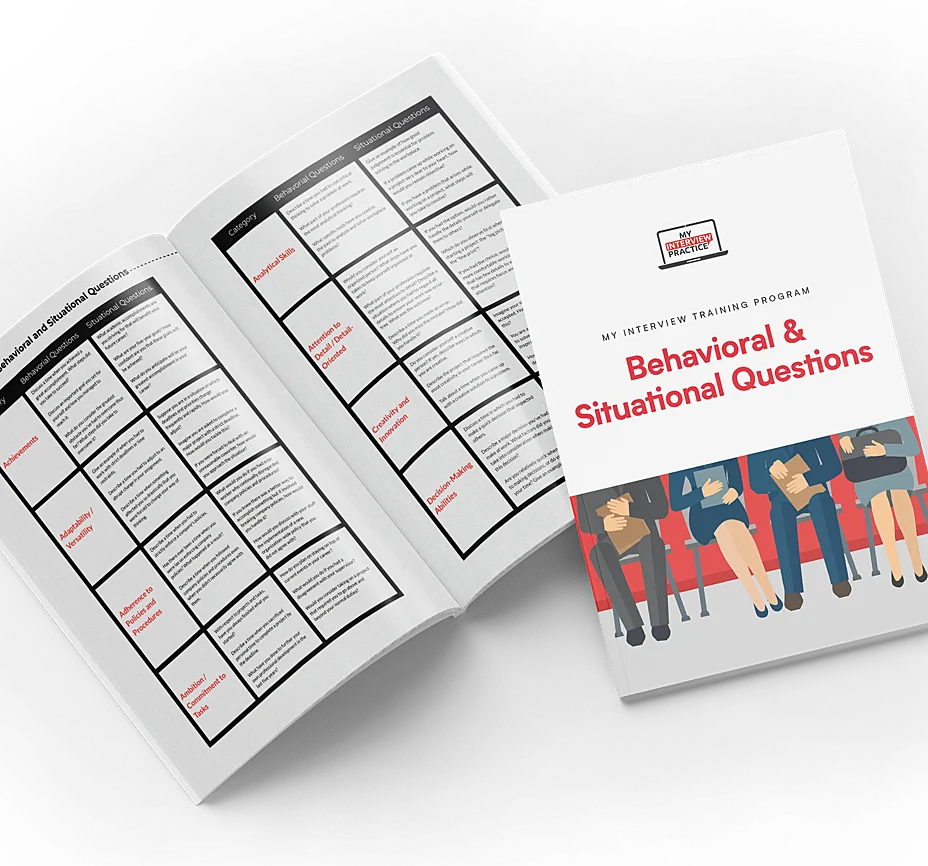 BACK
BACK
.NET Developer Interview Questions
A .NET developer plays a key role in building secure, scalable, and high-performance applications using the .NET framework. Whether developing enterprise systems, web applications, or mobile solutions, .NET professionals must have a strong grasp of object-oriented programming, database management, and software architecture.
To succeed in a .NET developer interview, candidates should be prepared to discuss technical concepts, demonstrate problem-solving skills, and showcase their ability to collaborate within development teams. Below are some common interview questions to help you get ready.
.NET Developer Interview Questions
1. Can you explain what a .NET web service is?
Web services allow applications to communicate over the internet, making them a critical component of modern software development. This question tests your understanding of how .NET web services function and their role in application architecture.
Example Answer
"A .NET web service is a standardized way for applications to exchange data over a network using protocols like HTTP and XML. It allows different applications—regardless of programming language or platform—to communicate seamlessly. Web services enable developers to expose functionalities that can be accessed remotely, making integration between systems much more efficient."
2. How do the terms class and object relate to each other, and what is the difference between them?
Object-oriented programming (OOP) is fundamental to .NET development. The interviewer wants to assess whether you understand how classes and objects interact in the .NET framework.
Example Answer
"A class is a blueprint or template that defines the structure and behavior of an object, including its attributes and methods. An object, on the other hand, is a specific instance of a class that exists in memory during runtime. For example, a 'Car' class may define properties like color and speed, while individual objects represent specific cars with unique values for those properties."
3. How does managed code differ from unmanaged code?
.NET applications can run both managed and unmanaged code, and this question evaluates your understanding of how the .NET runtime manages memory and execution.
Example Answer
"Managed code runs within the Common Language Runtime (CLR), which handles memory management, garbage collection, and security automatically. Unmanaged code, like C++ applications, runs directly on the operating system and requires manual memory management. The advantage of managed code is that it reduces memory leaks and improves security, while unmanaged code offers more direct control over system resources."
4. Can you explain inheritance and how it functions in a .NET environment?
Inheritance is one of the pillars of object-oriented programming, and understanding it is essential for structuring reusable, maintainable code.
Example Answer
"Inheritance allows a class to derive properties and behaviors from another class, reducing code duplication and promoting reusability. A parent class defines shared functionality, while child classes inherit those attributes and can introduce additional functionality. For example, a 'Vehicle' class might have general properties like speed and fuel type, while a 'Car' subclass could add more specific attributes like trunk space and passenger capacity."
5. How does an abstract class differ from an interface in .NET?
Abstract classes and interfaces both define contracts for implementing classes, but they serve different purposes. This question tests whether you know when to use each.
Example Answer
"An abstract class provides a base class with both implemented and abstract methods. It allows code reuse but cannot be instantiated on its own. An interface, on the other hand, defines only method signatures without implementation, enforcing consistency across multiple classes. If a class needs to inherit behavior, an abstract class is preferred. If a class needs to adhere to a strict contract across different implementations, an interface is the better choice."
6. What is a delegate in .NET, and how is it used?
Delegates are an important feature in .NET for handling events and callbacks. This question evaluates whether you can effectively use delegates for flexible, reusable programming patterns.
Example Answer
"A delegate is a type that holds references to methods, allowing methods to be passed as parameters. It’s useful for event-driven programming and callbacks. Delegates enable loose coupling between components by allowing methods to be called dynamically at runtime. For example, they’re often used in event handlers where a button click triggers different actions depending on the assigned delegate."
7. What is the difference between a queue and a stack in .NET?
Data structures are foundational to programming, and understanding when to use a queue versus a stack is important for performance and efficiency.
Example Answer
"A stack follows the Last In, First Out (LIFO) principle, meaning the last item added is the first one removed. It’s useful for scenarios like function call management and undo operations. A queue follows the First In, First Out (FIFO) principle, meaning the first item added is the first one removed. It’s commonly used in task scheduling and message processing where order matters."
8. When would you use .NET web forms instead of ASP.NET MVC?
This question tests your understanding of different .NET frameworks and whether you can determine the best approach for a given project.
Example Answer
".NET Web Forms is useful when rapid application development is needed, especially for event-driven applications with minimal custom coding. It provides built-in controls and a drag-and-drop interface, making it easier to develop applications quickly. ASP.NET MVC, on the other hand, is better suited for complex applications that require fine-grained control over HTML, CSS, and JavaScript. It promotes a separation of concerns, which improves maintainability and scalability."
9. What is the difference between value types and reference types in .NET?
Memory management is an essential concept in .NET development, and this question evaluates whether you understand how data is stored and accessed.
Example Answer
"Value types store data directly in memory and are typically stored in the stack. Examples include primitive data types like integers, booleans, and structures. Reference types, on the other hand, store memory addresses pointing to data, which is allocated in the heap. Objects, strings, and arrays are examples of reference types. The key difference is that modifying a reference type affects all instances pointing to that memory, whereas value types operate independently."
10. How does garbage collection work in .NET?
Efficient memory management is crucial in application performance. This question tests your understanding of how .NET automatically manages memory.
Example Answer
".NET’s garbage collector automatically reclaims memory occupied by objects no longer in use. It works in three generations: Gen 0 for short-lived objects, Gen 1 for objects surviving an initial cleanup, and Gen 2 for long-term objects. The garbage collector runs periodically, identifying unreachable objects and freeing up memory, reducing the risk of memory leaks."
11. What are extension methods in C#, and how do they work?
This question assesses your knowledge of extending functionality without modifying existing code, a key feature in .NET.
Example Answer
"Extension methods allow developers to add new methods to existing classes without modifying their source code. This is achieved by defining static methods within a static class, using the 'this' keyword as a parameter for the type being extended. They’re useful for enhancing libraries and simplifying code reuse, such as adding custom string manipulation functions to the built-in String class."
12. What is the purpose of dependency injection in .NET applications?
Modern .NET applications follow design patterns to improve maintainability. This question evaluates your understanding of dependency injection and its benefits.
Example Answer
"Dependency injection is a design pattern that promotes loose coupling by injecting dependencies into a class rather than having the class create them. This makes code more testable, maintainable, and scalable. It’s commonly used in ASP.NET Core applications where services like logging, configuration, and database contexts are injected through constructors rather than being instantiated manually."
13. How does authentication differ from authorization in .NET security?
Security is critical in modern applications, and this question assesses your knowledge of key security concepts in .NET development.
Example Answer
"Authentication is the process of verifying a user's identity, typically using credentials like a username and password. Authorization determines what actions or resources an authenticated user can access. In .NET applications, authentication can be implemented using identity providers like OAuth or JWT, while authorization is handled through role-based or policy-based access control."
14. What is an asynchronous method in .NET, and why would you use one?
Asynchronous programming is essential for building scalable and responsive applications. This question tests your understanding of async operations in .NET.
Example Answer
"An asynchronous method allows a program to run operations without blocking the main thread. This improves performance, especially in applications that involve I/O-bound tasks like database queries or API calls. In .NET, asynchronous methods are implemented using the 'async' and 'await' keywords, enabling smoother execution and better responsiveness in web and desktop applications."

The Smarter Way to Prepare
Experience a smarter way to prepare with our interview simulator.
15. What are the main differences between an abstract class and an interface in .NET?
This question tests your understanding of object-oriented principles in .NET and how you apply them when designing applications.
Example Answer
"An abstract class serves as a blueprint for derived classes, allowing both defined and undefined methods to be included. It can have constructors and fields. An interface, on the other hand, only defines method signatures and properties without implementation. Classes that implement an interface must define all the methods. Abstract classes are useful when creating base functionality, while interfaces allow multiple inheritances and ensure that different classes share a common contract."
16. What is LINQ, and why is it useful in .NET applications?
Efficient data querying is crucial in .NET development, and this question evaluates your ability to work with LINQ to streamline database operations.
Example Answer
"LINQ, or Language Integrated Query, allows developers to query data from various sources like databases, XML, and collections using a unified syntax. It improves readability, reduces boilerplate code, and enhances maintainability by eliminating the need for complex loops and conditional statements. LINQ queries can be executed against SQL databases, in-memory collections, and even external APIs, making it a powerful tool for data manipulation in .NET applications."
17. What is the difference between early binding and late binding in .NET?
This question tests your knowledge of how .NET handles object binding and how it affects performance and flexibility.
Example Answer
"Early binding occurs at compile time, meaning the object type is known beforehand, leading to better performance and compile-time type checking. Late binding, on the other hand, happens at runtime, typically using reflection. While late binding offers flexibility, it comes with a performance cost and lacks compile-time checks, increasing the likelihood of runtime errors."
18. What is a RESTful API, and how would you implement one in .NET?
Modern applications rely on APIs for communication. This question evaluates your understanding of REST principles and .NET implementation.
Example Answer
"A RESTful API follows REST principles, allowing communication between clients and servers using HTTP methods like GET, POST, PUT, and DELETE. In .NET, a REST API is typically implemented using ASP.NET Core Web API. It involves creating controllers with route mappings, defining models for data transfer, and using dependency injection for service handling. Authentication and response formatting are managed using middleware and JSON serialization."
19. How would you optimize the performance of a .NET application?
This question assesses your ability to improve efficiency, reduce bottlenecks, and enhance the overall performance of a .NET application.
Example Answer
"Optimizing a .NET application involves multiple strategies, such as caching frequently used data, reducing database queries by using eager loading in Entity Framework, and optimizing loops and collections. Asynchronous programming with async and await helps improve responsiveness, while memory management techniques like disposing of unused objects and minimizing garbage collection overhead can enhance overall efficiency."
20. How do you handle errors and exceptions in .NET applications?
Error handling is essential for maintaining application stability. This question evaluates your approach to managing exceptions effectively.
Example Answer
"In .NET, exceptions are managed using try-catch blocks to handle errors gracefully. Logging frameworks like Serilog or NLog help track issues in production environments. Global exception handling in ASP.NET Core ensures unhandled exceptions are properly logged and converted into user-friendly error responses. It’s also important to differentiate between expected exceptions, which should be handled within business logic, and critical exceptions that require immediate attention."
21. What are design patterns, and which ones have you used in .NET development?
This question tests your familiarity with common design patterns and your ability to apply them in practical scenarios.
Example Answer
"Design patterns are reusable solutions to common software design problems. In .NET, I’ve used the Singleton pattern for managing shared resources, the Repository pattern for data access abstraction, and the Factory pattern for object creation without specifying concrete classes. Applying design patterns improves code maintainability, scalability, and testability."
A word of warning when using question lists.
Question lists offer a convenient way to start practicing for your interview. Unfortunately, they do little to recreate actual interview pressure. In a real interview you’ll never know what’s coming, and that’s what makes interviews so stressful.
Go beyond question lists using interview simulators.
With interview simulators, you can take realistic mock interviews on your own, from anywhere.
My Interview Practice offers a dynamic simulator that generates unique questions every time you practice, ensuring you're always prepared for the unexpected. Our AI-powered system can create tailored interviews for any job title or position. Simply upload your resume and a job description, and you'll receive custom-curated questions relevant to your specific role and industry. Each question is crafted based on real-world professional insights, providing an authentic interview experience. Practice as many times as you need to build your confidence and ace your next interview.
| List of Questions |
In-Person Mock Interview |
My Interview Practice Simulator |
|
|---|---|---|---|
| Questions Unknown Like Real Interviews | |||
| Curated Questions Chosen Just for You | |||
| No Research Required | |||
| Share Your Practice Interview | |||
| Do It Yourself | |||
| Go At Your Own Pace | |||
| Approachable |
The My Interview Practice simulator uses video to record your interview, so you feel pressure while practicing, and can see exactly how you came across after you’re done. You can even share your recorded responses with anyone to get valuable feedback.
Check out My Interview Practice
Positions you may be interested in
Get the free training guide.
See the most common questions in every category assessed by employers and be ready for anything.
Get the Guide


